Fire safety systems are there for your protection
The penalty for interfering with a fire appliance is up to 50 Penalty Units. Currently, that’s $8,000 for an individual, or up to $40,500 for a corporation.
MAINTAIN ESCAPE ROUTES AND FIREFIGHTING EQUIPMENT

Keep all firefighting equipment, such as extinguishers and fire hoses clear of obstructions. Never store items in fire equipment cupboards.

Never prop or wedge open fire or smoke doors because these are designed to stop the spread of smoke and fire.

Do not store items in corridors or staircases as this can block escape routes and obstruct firefighters from doing their job.
Remember, fire safety systems are there for your protection. It is an offence to interfere with fire safety systems. Fines and penalties of up to $8,000 for individuals and $40,500 for a corporations may be issued for those found to have tampered or interfered with fire safety systems.
Don’t interfere with fire hydrants or alarms
Preventing equipment from working correctly is a serious offence, even if it’s accidental.
- Don’t cover or conceal a fire extinguisher, hose reel, hydrant, or signage marking the position.
- Tampering with an alarm speaker can cause the entire building system to malfunction.
Keep passageways, stairways and doors clear
In an emergency every second counts. Don’t obstruct evacuation paths or exits.
- Fire doors are essential to stopping the spread of fire and smoke. Allow doors to open and close freely
Maintain fire appliances and equipment
Occupiers and building managers have a joint responsibility to maintain fire appliances.
- It’s an offence to remove, destroy, or damage a fire appliance or it’s enclosure
- Equipment should be checked regularly, and serviced as needed.
Fire safety systems include
- Fire doors and door frames (including unit front doors)
- Fire indicator panels
- Occupancy warning speakers
- Fire hose reels
- Extinguishers
Emergencies Act 2004
Under the ACT Emergencies Act 2004, there are offences relating to fires. Full details can be found in the Act.
- The occupier of premises commits an offence if the occupier fails to comply with a direction given to the occupier under section 92 (Direction to provide fire appliance at premises).
Maximum penalty: 50 penalty units. - The occupier of premises commits an offence if—
- a fire appliance is provided or installed at the premises under a direction under section 92; and
- the occupier does not maintain the fire appliance in accordance with a proper maintenance standard.
Maximum penalty: 50 penalty units
- The occupier of premises commits an offence if—
- a fire appliance at the premises has been removed, destroyed or damaged or is defective; and
- the occupier knows or is reckless about whether the fire appliance has been removed, destroyed or damaged or is defective; and
- the occupier fails to repair or replace the fire appliance.
Maximum penalty: 50 penalty units.
- An offence against subsection (1) is a strict liability offence.
- Strict liability applies to subsection (3) (c).
- In this section:
proper maintenance standard means—- AS 1851 (Routine service of fire protection systems and equipment) as in force from time to time; or
- AS/NZS 2293.2 (Emergency evacuation lighting for buildings Inspection and maintenance) as in force from time to time; or
- a standard approved for the fire appliance as part of a building approval issued for the premises under the Building Act 2004, section 28; or
- a standard of maintenance prescribed by regulation.
- The Legislation Act, section 47 (6) does not apply in relation to an Australian Standard, or an Australian/New Zealand Standard, applied, adopted or incorporated as in force from time to time under this section.
Note: The standards do not need to be notified under the Legislation Act because s 47 (6) does not apply (see Legislation Act, s 47 (7)). The standards may be purchased at www.standards.org.au.
- A person commits an offence if—
- the person puts anything in a passageway, stairway or exit that people may use, or intend to use, for escape from premises if there is a fire; and
- the thing obstructs the passageway, stairway or exit; and
- the person is reckless about whether the thing obstructs the passageway, stairway or exit.
Maximum penalty: 50 penalty units, imprisonment for 6 months or both.
- A person commits an offence if the person—
- does something to a door or exit in a passageway or stairway in premises that may prevent people using the door or exit to leave the premises if there is a fire; and
- is reckless about whether the thing would prevent people using the door or exit to leave the premises if there is a fire.
Maximum penalty: 50 penalty units, imprisonment for 6 months or both.
- A person commits an offence if the person fixes a fire door, smoke door or exit door in an open or closed position in a way that is not approved by the chief officer (fire and rescue service).
Maximum penalty: 50 penalty units. - An offence against subsection (3) is a strict liability offence.
A person commits an offence if—
- the person intentionally stores or deposits flammable material at premises; and
- the material is stored or deposited in a way that causes, directly or indirectly, a danger to life or property if there is a fire; and
- the person is reckless about whether the material causes a danger to life or property if there is a fire.
Maximum penalty: 50 penalty units, imprisonment for 6 months or both.
- A person commits an offence if the person does something to, or near, a fire appliance or a fire appliance container that—
- prevents or hinders the effective use of the appliance or container; or
- damages the appliance or container.
Maximum penalty: $8,000 for an individual and $40,500 for a corporation (50 penalty units).
- A person commits an offence if the person—
- covers, encloses or conceals a fire hydrant; or
- obliterates or removes a mark, sign or letter indicating the position of, or distinguishing, a fire hydrant.
Maximum penalty: $8,000 for an individual and $40,500 for a corporation (50 penalty units).
- A person commits an offence if the person does anything to a fire alarm that prevents or hinders the effective use of the fire alarm.
Maximum penalty: $8,000 for an individual and $40,500 for a corporation (50 penalty units), imprisonment for 6 months or both. - This section does not apply if the person has the permission of a member of the fire and rescue service, a member of the rural fire service or a police officer to do the thing.
- Subsection (3) also does not apply if the person does the thing—
- to give an alarm of fire; or
- to test or do maintenance work on the fire alarm.
- An offence against subsection (1), (2) or (3) is a strict liability offence.
- In this section:
fire appliance container means a container used for housing or storing fire appliances.
In the ACT, penalty units are covered by the Legislation Act 2001, s 133).
Currently, a penalty unit is $160.00 for an offence committed by a person and $810.00 for an offence committed by a corporation.
The penalty unit value must be reviewed by the Attorney-General at least once every 4 years.




